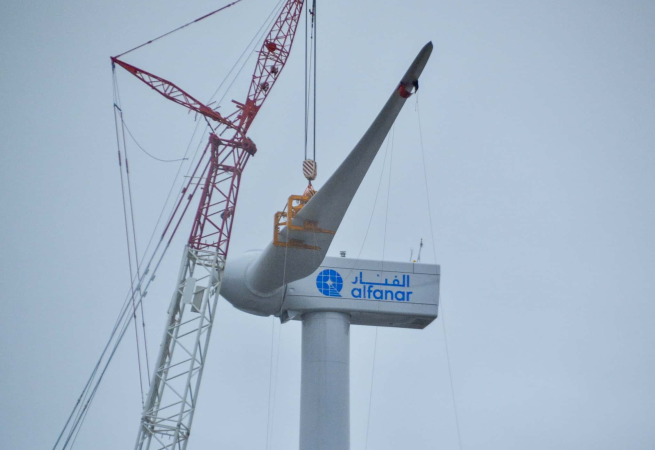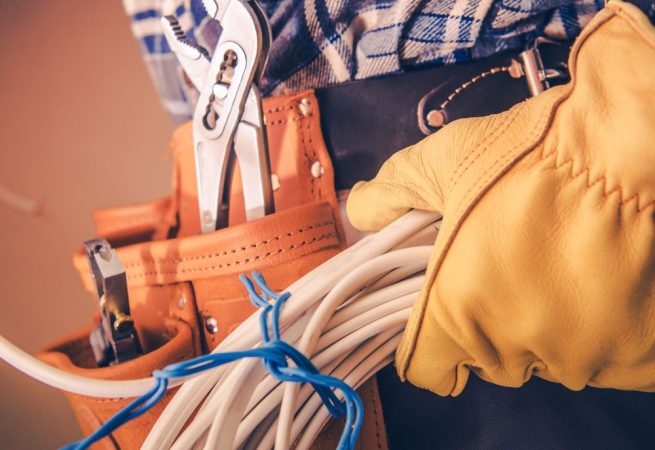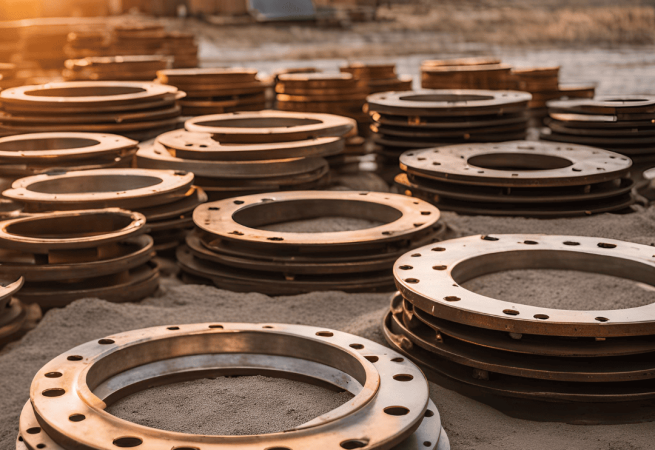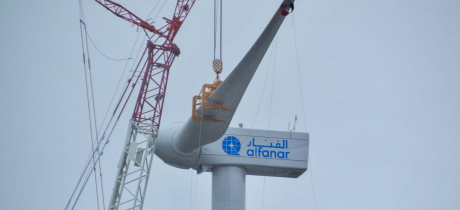
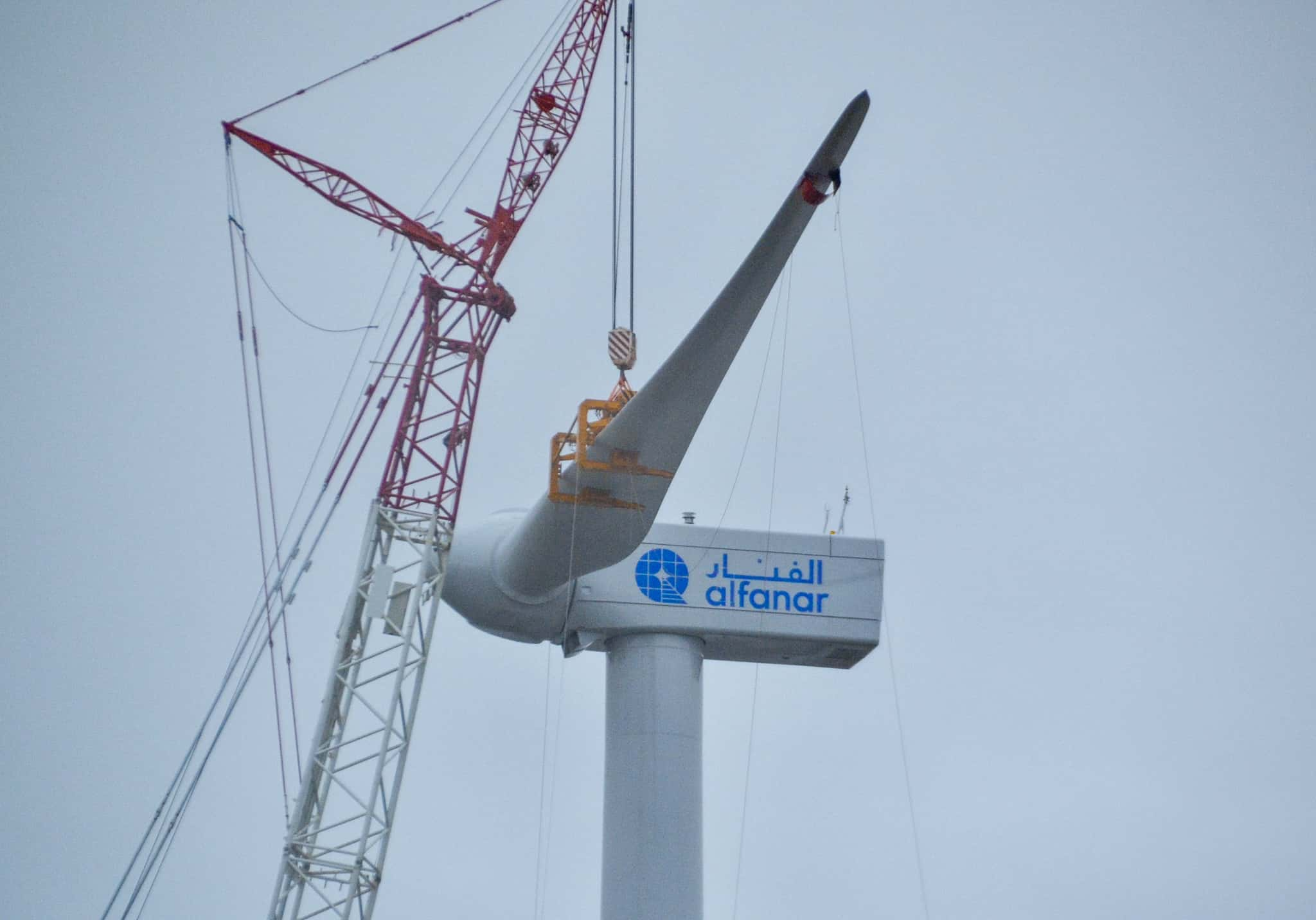
A Guide To Utilizing Nuclear Power For Green Hydrogen
Nuclear power is emerging as a promising solution for producing green hydrogen, a clean energy carrier key to decarbonising industries. By utilizing nuclear energy’s capacity to generate heat and electricity with minimal carbon emissions, hydrogen can be produced sustainably at scale. This guide explores how nuclear power can drive advancements in green hydrogen Saudi Arabia production.
Understanding the role of nuclear power in hydrogen production
Nuclear power plants produce consistent and reliable energy, making them well-suited for hydrogen production. Green hydrogen is created by splitting water molecules into hydrogen and oxygen through electrolysis, powered by clean energy sources. Nuclear energy provides the required electricity and heat without emitting greenhouse gases, making it an efficient method to produce hydrogen sustainably.
Benefits of combining nuclear power and hydrogen
The integration of nuclear power into hydrogen production offers multiple advantages. Firstly, nuclear reactors can operate continuously, ensuring a stable supply of energy for round-the-clock hydrogen production. Secondly, combining nuclear and hydrogen reduces dependency on fossil fuels, supporting the global transition to cleaner energy. Finally, it improves the efficiency of existing nuclear infrastructure, making full use of its strength.
Methods for green hydrogen production using nuclear
Two primary methods use nuclear power for green hydrogen production:
Electrolysis: Nuclear power plants provide electricity for water electrolysis, splitting water into hydrogen and oxygen. Advanced reactors with higher efficiency can further improve this process.
Thermochemical water splitting: This involves using the high-temperature heat generated by nuclear reactors to drive chemical reactions that produce hydrogen. This method is more efficient than traditional electrolysis and reduces overall energy consumption.
Challenges and solutions
Despite its strength, there are challenges in utilising nuclear power for green hydrogen production. High costs, public concerns over nuclear safety, and the need for infrastructure development are significant barriers. Addressing these issues requires government policies, investment in research, and public awareness campaigns. Innovations in reactor design and safety measures can also improve public trust and feasibility.
Future prospects of nuclear-powered hydrogen
As the demand for green hydrogen grows across industries such as transportation, manufacturing, and energy storage, nuclear power offers a scalable solution for clean production. By integrating advanced nuclear technologies with hydrogen production processes, countries can achieve decarbonisation targets while nurturing energy independence.

Best Ways To Enjoy A Musandam Tour
A Musandam tour is an ideal way to escape the hustle and bustle of city life. Located in Oman, Musandam offers visitors a unique experience with its rugged mountains, pristine waters, and traditional Omani culture. From cruising along the coastline to exploring hidden caves and getting into the sea, there are plenty of ways to make the most of your visit.
In this guide, we will discuss the best ways to enjoy a Musandam tour, from popular activities to essential tips for planning your trip.
Take a traditional dhow cruise:
A dhow cruise is one of the most relaxing and scenic ways to explore Musandam. These traditional wooden boats glide through the fjords, offering breathtaking views of towering cliffs and tranquil waters. Most cruises include refreshments, lunch, and opportunities for swimming and snorkeling.
Go snorkeling and diving:
The waters of Musandam are rich in marine life, making snorkeling and diving a must-try activity. Coral reefs, colourful fish, and even dolphins can be spotted in the area. Popular diving spots like Lima Rock and Octopus Rock offer incredible underwater experiences.
Spot dolphins in the wild:
Dolphin watching is a highlight of any Musandam trip. These playful creatures are often seen swimming alongside boats, making for an unforgettable experience. The best way to increase your chances of spotting them is by joining an early morning cruise.
Try Kayaking through the fjords:
For those who enjoy a bit of adventure, kayaking through Musandam’s fjords provides a unique way to explore hidden coves and peaceful lagoons. The calm waters make it suitable for both beginners and experienced kayakers.
Visit the remote villages:
Musandam is home to small fishing villages that remain largely untouched by modern development. Places like Kumzar and Telegraph Island offer a glimpse into the traditional way of life. A visit to these villages can add a cultural aspect to your tour.
Camp under the stars:
For a more immersive experience, camping on the beaches of Musandam is a great option. Spending a night under the stars, surrounded by nature, is an unforgettable way to enjoy the region.
Explore Khasab and its fort:
Khasab, the capital of Musandam, is worth a visit for its historical sites and markets. The 17th-century Khasab Fort offers insights into the region’s history and provides excellent panoramic views.

Must-Have Outdoor Furniture Pieces For Entertaining Guests
Guests are an integral part of any outdoor gathering or party. Whether it’s a barbecue, a poolside hangout, or a simple backyard get-together, having the right outdoor furniture pieces can make all the difference in creating a comfortable and inviting atmosphere for your guests.
Here are some must-have outdoor furniture pieces for entertaining guests:
Dining table and chairs:
A sturdy dining table with matching chairs is one of the most useful pieces for outdoor furniture UAE. It allows guests to sit and enjoy meals comfortably. A weather-resistant material, such as metal, teak, or rattan, ensures durability. Extendable tables are a good option for larger gatherings, as they can be adjusted based on the number of guests.
Comfortable seating options:
Seating plays a big role in making an outdoor space inviting. Sofas, lounge chairs, or cushioned benches offer a relaxed setting. Sectional sofas are a great choice as they can be arranged in different ways to fit the space. Adding outdoor cushions and throw pillows makes seating even more comfortable.
Coffee table or side tables:
Small tables placed near seating areas provide a convenient spot for drinks, snacks, or decorations. A coffee table in the centre of a seating area helps bring everything together, while side tables placed next to chairs make it easy for guests to set down their items.
Shade and shelter:
A large umbrella, pergola, or shade sail helps protect guests from the sun while making the space more enjoyable. Retractable awnings or gazebos provide additional coverage, making it possible to entertain in different weather conditions.
Outdoor bar or serving station:
A small bar cart, counter, or serving station makes hosting easier by keeping drinks and snacks within reach. A mobile cart with storage space allows for easy movement and organisation, making it a practical addition to any outdoor setup.
Fire pit or heater:
A fire pit or outdoor heater makes it possible to entertain guests even when the weather is cooler. It creates a cosy atmosphere and works as a gathering spot where people can sit together and enjoy conversations.
Outdoor lighting:
String lights, lanterns, or solar-powered lamps add warmth and style to an outdoor space. Proper lighting makes the area more inviting in the evening, allowing gatherings to continue after sunset. With these furniture pieces, an outdoor space can be both functional and stylish, making it easier to entertain guests comfortably. Simple additions like cushions, lighting, and shade create a welcoming setting for any occasion.

6 Unique Pattern Wallpaper Ideas For Small Spaces
As the saying goes, “good things come in small packages”. This is especially true when it comes to interior design. With small spaces becoming more common in urban areas, it’s important to find ways to make these limited areas feel comfortable and visually appealing.
One way to add character and personality to a small space is through patterned wallpaper. Not only does it instantly transform a plain wall into a focal point, but it also creates the illusion of depth and dimension. Here are 6 unique pattern wallpapers ideas that will improve your small space:
Vertical stripes for height:
Vertical stripes are a classic choice for small spaces as they draw the eye upward, creating the illusion of taller ceilings. Choose narrow stripes in light or neutral tones to avoid overwhelming the room. Subtle metallic accents can add a touch of elegance without feeling too bold.
Geometric patterns for a modern touch:
Geometric designs are trendy and versatile, perfect for making a small space feel fresh and contemporary. Opt for smaller, repeating shapes in soft, muted tones to maintain a sense of openness. A hexagonal or triangular pattern works beautifully in bathrooms or home offices.
Tiny floral for subtle charm:
Small floral prints are ideal for creating a cosy and inviting atmosphere in compact spaces. Choose delicate designs in pastel hues for a timeless, romantic look. This type of wallpaper works particularly well in bedrooms or dressing areas.
Large-scale murals for depth:
Contrary to popular belief, large-scale patterns can work wonders in small rooms. Mural-style wallpaper with a scenic or abstract design can create depth and make the space feel more expansive. Use it on one feature wall to add drama without overwhelming the entire room.
Polka dots for playfulness:
Polka dots are a fun and versatile option, perfect for nurseries, children’s rooms, or even quirky living spaces. Opt for smaller dots in contrasting colors to keep the pattern light and cheerful. A monochrome polka dot design can also add sophistication.
Textured patterns for subtle dimension:
For a minimalist yet impactful look, consider wallpapers with textured patterns like linen, grasscloth, or embossed designs. These add dimension and interest without being too busy, making them perfect for tight spaces like entryways or nooks.
With these pattern ideas, even the smallest areas can become design highlights, proving that size doesn’t limit creativity. The right wallpaper can change any corner of your home into a stylish and welcoming retreat.

The Vital Role Of Renewable Energy Companies In Advancing Environmental Sustainability
Renewable energy companies are at the forefront of efforts to combat climate change and promote environmental sustainability. Their role extends beyond simply providing alternative energy sources; they are vital in shaping a greener future. Here’s how these renewable energy companies in UAE contribute to environmental well-being and drive global sustainability.
Reducing greenhouse gas emissions:
One of the primary roles of renewable energy companies is to reduce greenhouse gas emissions, which are major contributors to climate change. By exploring energy from renewable sources such as solar, wind, and hydropower, these companies offer cleaner alternatives to fossil fuels. Unlike traditional energy sources, renewables do not emit carbon dioxide or other harmful pollutants during operation. This reduction in greenhouse gases helps mitigate global warming and improves air quality, leading to healthier ecosystems and communities.
Promoting energy efficiency:
Renewable energy companies are focused on generating clean power and also on improving energy efficiency. Advances in technology and innovative practices contribute to more efficient energy production and consumption. For example, solar panels and wind turbines are becoming increasingly efficient, capturing more energy from natural sources. Additionally, companies often implement energy-saving measures in their operations and advocate for energy efficiency in the broader energy market. This focus on efficiency reduces overall energy demand and helps conserve resources.
Supporting biodiversity and ecosystem health:
The impact of renewable energy on biodiversity and ecosystem health is generally positive compared to conventional energy sources. By reducing reliance on fossil fuels, renewable energy companies help prevent habitat destruction, water pollution, and soil degradation associated with traditional energy extraction and combustion. Also, many renewable projects, such as solar farms and wind installations, are designed with environmental considerations in mind, including site selection and ecological impact assessments. This approach helps to preserve natural habitats and protect wildlife.
Driving technological innovation:
Renewable energy companies play a vital role in advancing technological innovation. Continuous research and development in renewable technologies lead to more efficient, cost-effective, and environmentally friendly solutions. Innovations such as advanced battery storage, smart grids, and next-generation solar panels are changing the energy land. By investing in and deploying innovative technologies, these companies contribute to a more sustainable energy system and drive progress towards a low-carbon future.

5 Popular Teeth Whitening Techniques
A bright, white smile is often associated with youth and beauty, and many people look for effective ways to improve their teeth’s appearance. There are several teeth whitening in Abu Dhabi techniques available, each with its own set of benefits. Below are some popular teeth whitening methods, each designed to deliver a brighter smile.
In-office teeth whitening:
In-office teeth whitening treatments are one of the fastest and most effective options for getting a brighter smile. Performed by a dental professional, this treatment uses stronger bleaching agents to achieve dramatic results in a single visit. The procedure typically involves the application of a gel that is activated by a special light or laser. It can whiten your teeth by several shades in just one session, making it ideal for those looking for quick results.
At-home teeth whitening kits:
At-home teeth whitening kits are a more convenient and affordable option. These kits usually include whitening gel or strips that can be applied to your teeth over a period of days or weeks. While they may take longer to show results compared to in-office treatments, they can still provide effective whitening, especially when used consistently. Many kits are available over-the-counter, though professional-grade options can be prescribed by your dentist.
Whitening toothpaste:
Whitening toothpaste is a simple and cost-effective option for maintaining a bright smile. These toothpastes contain mild abrasives that help remove surface stains on your teeth. While they don’t change the natural color of your teeth, they can help to brighten them by polishing away stains caused by coffee, tea, or smoking. This method is ideal for daily use to maintain the results of more intensive whitening treatments.
Whitening strips:
Whitening strips are thin, flexible plastic strips coated with a whitening gel. You apply the strips directly to your teeth for a set period, usually 20 to 30 minutes. Over time, the active ingredients in the gel work to break down stains and lighten the color of your teeth. Whitening strips can deliver good results when used regularly but are generally less powerful than professional treatments.
Laser teeth whitening:
Laser teeth whitening is a procedure that combines the use of laser light and bleaching gel. The gel is applied to the teeth, and the laser is used to activate the whitening agent, speeding up the process. This technique is known for producing quick, noticeable results and can lighten teeth several shades in just one session.

The Different Types Of Anxiety Disorders
Anxiety disorders are a group of mental health conditions that are characterized by intense feelings of fear, worry and uneasiness. They can greatly affect a person’s daily life and overall well-being. There are several types of anxiety disorders, each with its own distinct symptoms and treatment approaches.
Generalized anxiety disorder (GAD):
Generalized anxiety disorder (GAD) is characterized by excessive and uncontrollable worry about everyday life situations. People with GAD often experience anxiety about work, health, or family matters, even when there is no immediate cause for concern. This constant state of worry can lead to physical symptoms such as muscle tension, fatigue, and difficulty concentrating. GAD anxiety treatment often requires a combination of therapy and medication for effective anxiety treatment.
Panic disorder:
Panic disorder involves recurrent panic attacks—sudden and intense feelings of fear that can occur without warning. These attacks often involve physical symptoms such as a rapid heartbeat, chest pain, shortness of breath, and dizziness. The fear of having another panic attack can lead to avoidance behaviors, where individuals may refrain from leaving their homes or avoiding certain situations. Panic disorder is commonly treated with therapy, such as cognitive behavioral therapy (CBT), and medications that help manage anxiety.
Social anxiety disorder (SAD):
Social Anxiety Disorder, also known as social phobia, involves intense fear and self-consciousness in social situations. Individuals with SAD may worry excessively about being judged, embarrassed, or humiliated, which can lead to avoidance of social interactions. This can impact their personal relationships and professional life. Treatment for SAD typically involves CBT, exposure therapy, and sometimes medication to help manage the symptoms of anxiety and improve social functioning.
Specific phobias:
Specific phobias are characterised by an intense fear of a specific object, situation, or activity, such as flying, spiders, or heights. While many people experience mild fears or discomfort, individuals with phobias go to great lengths to avoid the object or situation, which can limit their ability to live a full life. Phobias are often treated through exposure therapy, where individuals gradually confront their fears in a controlled, safe environment, and sometimes medications may be prescribed to help reduce anxiety.

7 Popular Nursery School Programs To Consider
Choosing the right nursery school program for your child is a key decision that influences their early development and learning journey. With a variety of programs available, each catering to different needs and educational philosophies, parents has plenty of options to explore. Whether you consider structured academics, creative play, or language immersion, understanding the offerings of popular programs can help you make an informed decision. For parents in the UAE, exploring options like Dubai British nursery programs ensures a tailored experience for their little ones.
Montessori program:
The Montessori method focuses on child-led learning in a prepared environment. Children are encouraged to explore, work independently, and develop at their own pace. Practical life skills, sensory activities, and early academics are core elements of this program.
Reggio Emilia approach:
This program focuses on creative expression and collaboration. Children learn through project-based activities, with a focus on art, nature, and exploration. The approach views children as capable individuals and encourages them to express themselves in various ways.
Play- based curriculum:
A play-based curriculum focuses on learning through imaginative and structured play. Activities include role-playing, puzzles, and hands-on experiments that nurture cognitive, social, and motor skills development in a fun, relaxed environment.
Language immersion programs:
Language immersion programs expose children to a second language during their early years, improving their linguistic abilities. These programs are ideal for families who value bilingual or multilingual education.
Academic- focused nursery programs:
For parents seeking a more traditional approach, academic-focused nursery programs consider early literacy and numeracy skills. Structured lessons introduce foundational concepts in reading, writing, and mathematics.
Forest schools:
Nature-based learning is at the heart of forest schools. These programs involve outdoor activities like hiking, gardening, and nature crafts, helping children connect with the environment while building problem-solving and teamwork skills.
Waldorf education:
The Waldorf method integrates arts, music, and storytelling into daily activities. The approach encourages creativity and imagination, focusing on holistic development rather than early academics.
Selecting the right nursery program depends on your child’s personality and your educational priorities. Options like Montessori, STEM, or language immersion cater to diverse learning needs. For tailored programs, exploring centers such as Dubai British nursery offers an excellent starting point for your child’s educational journey.

5 Tools Every Homeowner Needs For Electrical Repairs
Handling electrical repairs at home can save time and money, but only if you have the right tools on hand. While some electrical issues may require professional help, basic repairs and maintenance tasks can often be completed by homeowners with the proper equipment. For those who feel confident in tackling these tasks, hiring an electrical maintenance company in UAE may be unnecessary. Below are some essential tools every homeowner should have for electrical repairs.
Multimeter
A multimeter is an essential tool for diagnosing electrical problems. This versatile device allows homeowners to measure voltage, current, and resistance in various components of the electrical system. With a multimeter, you can easily check if an outlet is functioning properly, if a circuit is carrying the correct voltage, or if wires are safely grounded. It’s essential for troubleshooting issues like dead outlets, tripped breakers, or faulty switches.
Insulated screwdrivers
Electrical screwdrivers are designed with an insulated handle, providing added protection when working with live wires. They are used for tightening or loosening screws in outlets, switches, and light fixtures. Having a set of insulated screwdrivers in various sizes ensures that you can handle different electrical components safely. They help to prevent accidental electrical shocks by reducing the risk of contact with live parts.
Wire cutters and strippers
Wire cutters are necessary for cutting wires to the appropriate length when doing electrical work. Wire strippers, instead, allow you to safely remove the insulation from the ends of wires without damaging the wire itself. Whether you’re replacing an outlet or installing a new light fixture, these tools are important for preparing and connecting wires properly.
Voltage tester
A voltage tester is a simple yet essential tool for checking if a wire or outlet is live. It helps ensure that you are working with de-energized wires before starting any repair or installation work. Voltage testers come in different forms, including pen-style testers that light up when they detect current. This tool gives peace of mind, preventing dangerous electrical shocks during DIY tasks.
Electrical tape
Electrical tape is a must-have for insulating and securing wires during electrical repairs. It can also be used to repair small sections of damaged wire insulation, ensuring the electrical system is safe. Ensure to use high-quality electrical tape that is rated for the appropriate voltage, and always wrap it tightly to prevent exposed wires from causing shorts or other hazards.

How Does API Q1 Consultancy Differ From Others?
API Q1 consultancy is highly specialized and focuses on providing expert guidance for achieving certification in quality management systems within the oil and gas industry. What sets API Q1 consultancy apart from others is its detailed and industry-specific approach to ensuring compliance with rigorous standards. Working with reliable API Q1 consultancy services Dubai ensures your business meets the highest quality and operational requirements, making it an invaluable partner in achieving success.
Industry-specific expertise:
API Q1 consultancies are specialized in providing services tailored to the oil and gas sector. Unlike general consultancy services, API Q1 consultants focus specifically on the unique requirements of the oil and gas industry. They understand the challenges, regulations, and standards that affect companies operating in this field. Their expertise in handling API Q1 certification processes ensures that clients can achieve and maintain the certification smoothly and efficiently.
Detailed knowledge of API Q1 standards:
One of the defining features of API Q1 consultancies is their in-depth knowledge of the specific standards associated with API Q1 certification. This certification is essential for companies involved in manufacturing, designing, and providing services related to the oil and gas industry. API Q1 consultancies have a profound understanding of the intricate details of the standard, including the quality management principles, product lifecycle management, and regulatory compliance. Their deep knowledge ensures businesses avoid common pitfalls and meet certification requirements.
Focus on risk management and compliance:
API Q1 consultancy services focus on risk management and compliance to ensure businesses can mitigate operational risks while adhering to industry standards. API Q1 requires rigorous attention to detail, and consultants guide businesses through risk assessments and compliance checks. The consultants help identify hazards, recommend safety measures, and ensure compliance with safety protocols throughout the entire operation. This proactive approach to risk management sets API Q1 consultancies apart from other types of consultancy services.
Tailored documentation support:
API Q1 certification requires the development and maintenance of an inclusive set of documents. API Q1 consultancies assist businesses in creating, reviewing, and improving documentation to ensure it meets the certification requirements. They help organizations build robust quality management systems, create effective processes, and implement procedures for quality control. Documentation support is key to achieving and maintaining API Q1 certification, and the specialized nature of these consultancies ensures accuracy and completeness.

